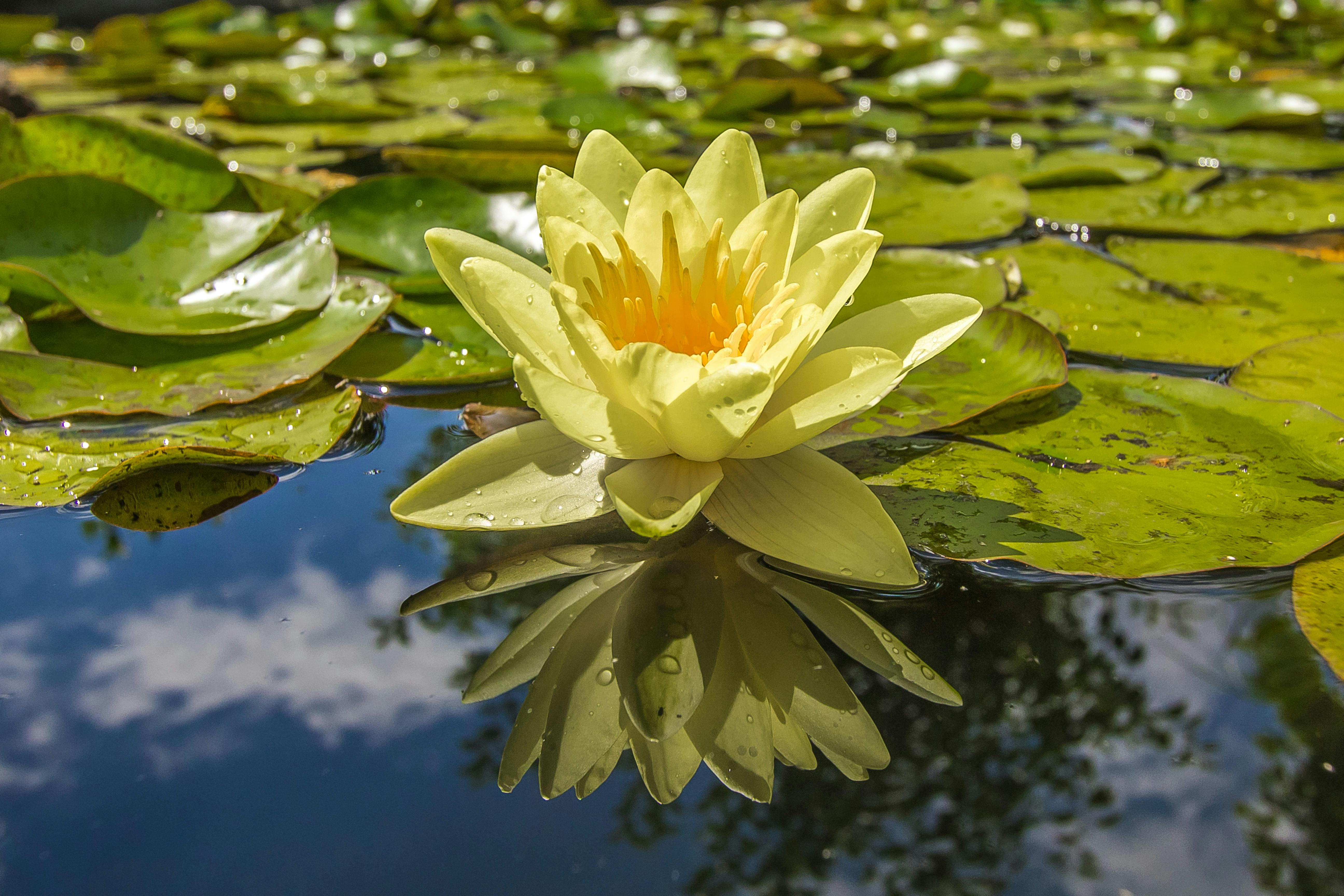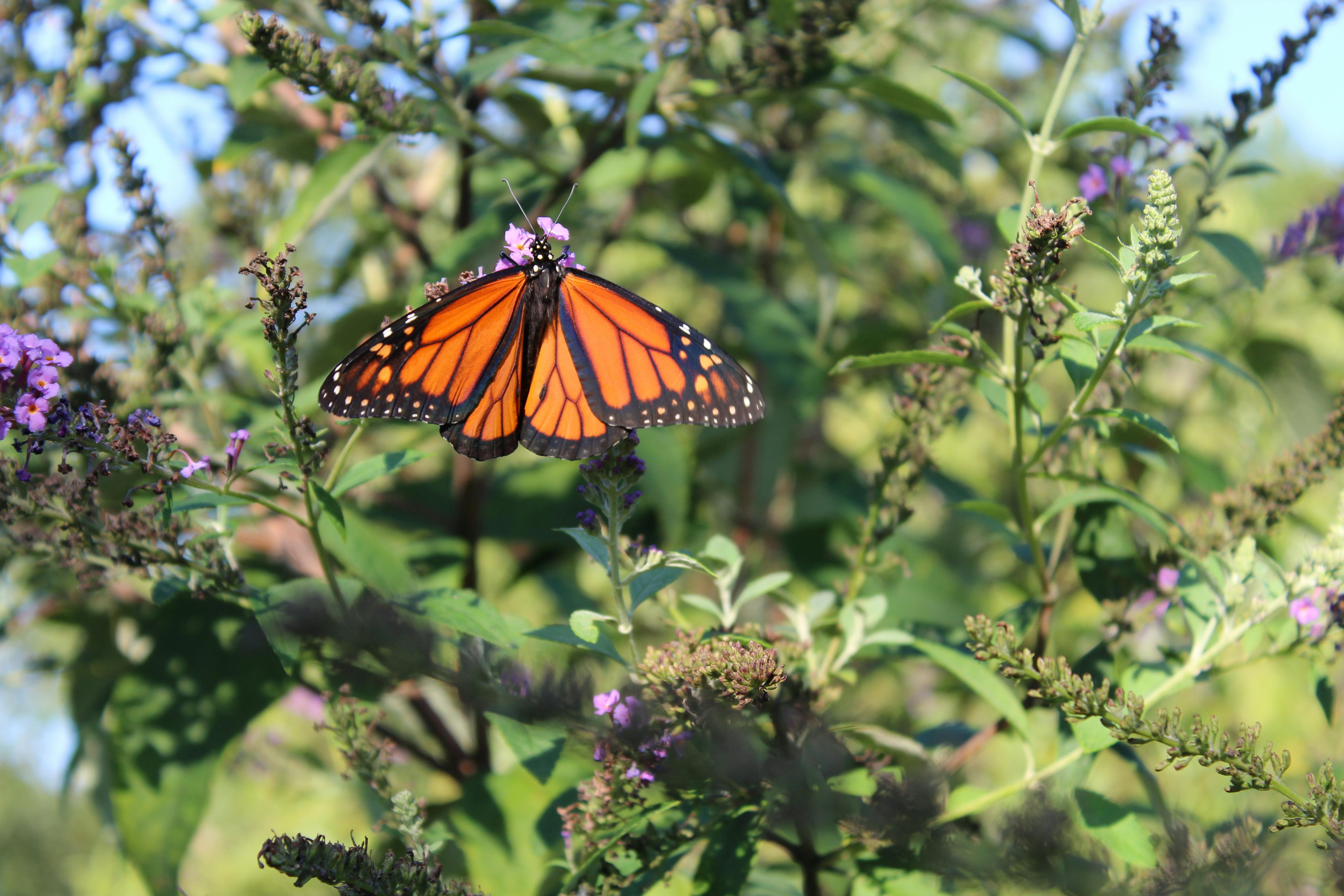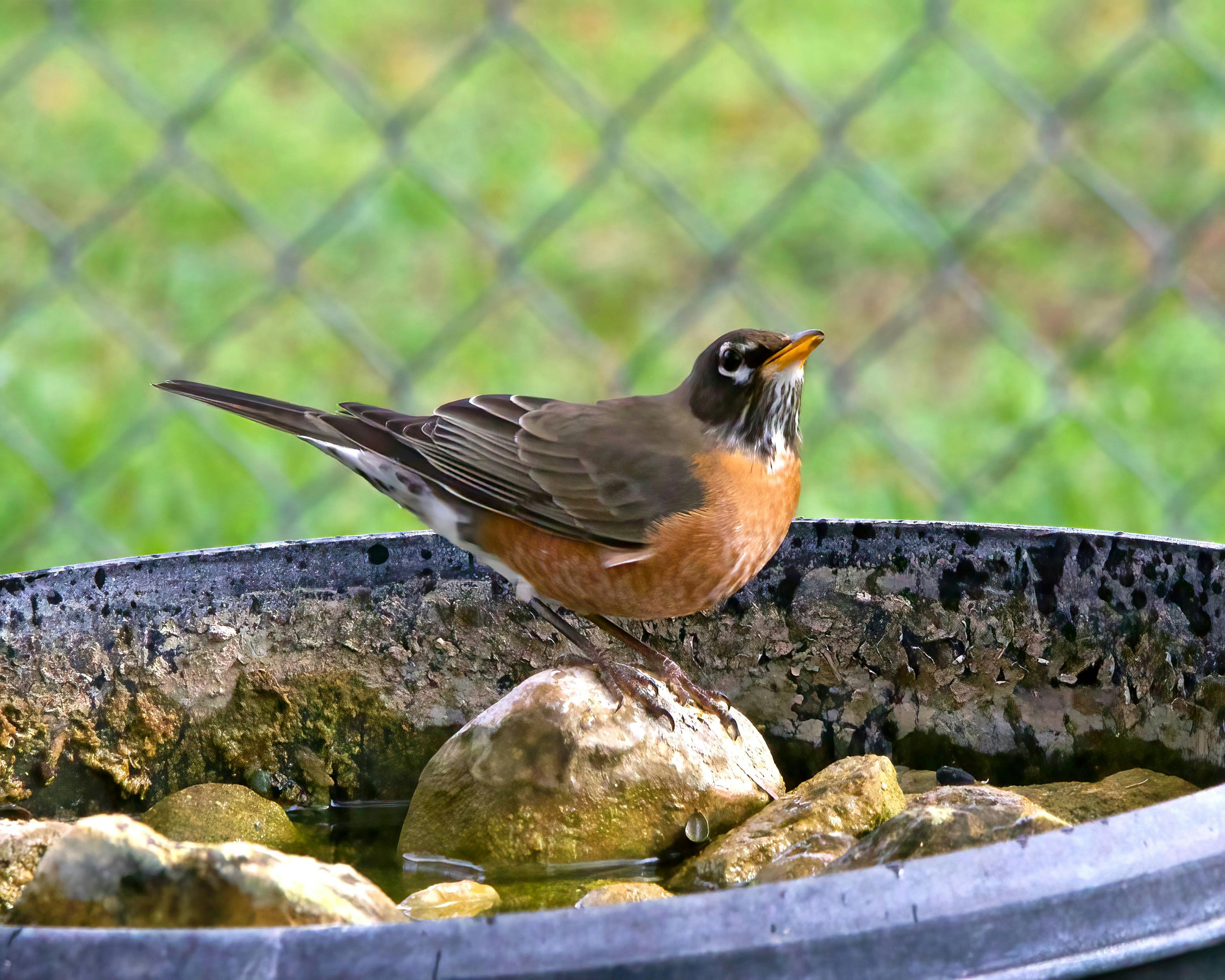Going Native: Texas Wetland Plants Perfect for Your Backyard Pond

Looking to add beauty, biodiversity, and low-maintenance charm to your backyard pond? Native wetland plants are the perfect solution. Designed by nature to thrive in the Texas climate, these hardy species support local wildlife, help control algae, and bring structure and seasonal interest to your pond. In this guide, we’ll introduce you to the best Texas pond plants, all native, all well-suited to our unique environment. Whether you're building a new water garden or restoring an old one, these native wetland plants will help it thrive naturally.
Why Choose Native Aquatic Plants?
Choosing native aquatic plants for your Texas pond is one of the smartest and most sustainable decisions you can make. These plants have adapted to thrive in our climate over thousands of years. This makes them naturally more drought-resistant, low-maintenance, and well-suited to our somewhat extreme weather patterns.
But it’s not just about making your job easier. Native aquatic plants also play a crucial role in creating a healthy, balanced pond ecosystem. They provide essential food and shelter for local wildlife like birds, frogs, turtles, and pollinators, all of which rely on native vegetation for survival.
Plus, many native wetland species help maintain water quality by filtering runoff, reducing erosion, and suppressing the growth of algae through natural shade and oxygenation.
Finally, many aquatic plants can become incredibly invasive outside their natural habitat. So, when you plant native aquatic plants, you create healthy ecosystems with plants that won’t wreak havoc in your environment if they escape.
In short, going native isn’t just good for your pond, it’s also good for Texas.
Key Considerations for Texas Backyard Ponds
It’s important to consider your local ecoregion when designing your Texas backyard pond. This is because some areas of our diverse state are drier and hotter, while others are wetter, and some have mild winters, while others have cold winters. Still, all ecoregions tend to have fluctuating rainfall, so native aquatics suited to your ecoregion are the best pond plants for Texas climates, because they are already naturally adapted to your unique climate challenges.
Aeration is another crucial consideration, particularly if you want to keep fish in your pond. Submerged aquatic plants will release oxygen into the water, which is vital for many aquatic organisms, particularly fish. If you have any running water flowing into your pond, that will also help. Still, if you have a small pond and want to keep fish, you may need to provide a filtration and aeration system to keep your fish healthy and prevent freezing in cold winters.
Another crucial consideration is the depth of your water. This matters because different classes of aquatic plants are adapted to different water zones. Let’s look at the various types of wetland plants based on their water requirements!
Submerged Aquatics
Submerged aquatics live beneath the surface of the water for most or all of their life cycle, at most sending a flower stalk above the water for reproduction. These plants require relatively deep water zones to survive, anywhere from about 2 to 15 feet, and most cannot tolerate drying out. Eelgrass is an example of a submerged aquatic plant.
Emergent Aquatics
Emergent aquatics have their roots anchored in the soil beneath shallow water, a few inches to about 2 feet deep, while the rest of the plant’s leaves, stems, and flowers grow above the water’s surface. Cattails and Arrowheads are emergent aquatic plants.
Floating-Leaved
Floating-leaved plants are those that are rooted in shallow to deep water up to about 10 feet deep. But, instead of being submerged or emergent, their leaves float on the water’s surface. Water Lilies and Pondweeds are floating-leaved aquatic plants.
Free-Floating Aquatics
Free-floating aquatics are not rooted at all but instead are free-floating in water of any depth. For example, Coontail is a free-floating aquatic plant that lives mostly submerged in the water column, while Duckweed (Lemna species) is a native, free-floating aquatic plant that floats on the water surface.
Hydrophytes for Pond Edges
Finally, wetland plants called hydrophytes are any water-loving plants that thrive in moist to wet soils. They are typically well-adapted to fluctuating water levels, as they can be wholly or partially submerged for parts of the year while living above water for most of the time. This makes them perfectly suited for life on the edge, thriving in wet soils near ponds. Blue Waterleaf is a good example of a hydrophyte.
Top Native Texas Wetland Plants for Backyard Ponds
Pickerelweed (Pontederia cordata)
Image: PICKERELWEED is available now at Nativo Gardens!
The beautiful Pickerelweed is a native Texas pond plant with tall, blue, purple, or white flower spikes standing tall above glossy, green, heart-shaped leaves. This emergent aquatic grows best in shallow water and wet pond edges where it provides food and habitat for waterfowl, bees, butterflies, and dragonflies.
Lizardtail (Saururus cernuus)
Image: LIZARDTAIL is available now at Nativo Gardens!
The lovely Lizardtail is a unique plant that is highly adaptable to fluctuating water levels, living as an emergent aquatic or hydrophyte. It’s the perfect wetland plant for Texas pond edges, where it may sometimes be flooded, while at other times it thrives in moist soils on the pond’s edge, spreading naturally and helping control erosion. It also thrives in partial to full shade, making it perfect for a woodland pond.
White Water Lily (Nymphaea odorata)
Image: WHITE WATER LILY is available now at Nativo Gardens!
You can’t have a native Texas pond without the classic beauty of the native White Water Lily with iconic floating leaves and fragrant white flowers that open in the early morning and close in the midday sun. The leaves and spongy stems provide valuable habitat and food for dragonflies, damselflies, waterfowl, mammals, and more.
American Eelgrass (Vallisneria americana)
Image: AMERICAN EELGRASS is available now at Nativo Gardens!
For deeper water up to 6 feet deep, the American Eelgrass is a submerged, native aquatic plant that lives underwater for its entire life, except for small white flowers that emerge from the surface on coiled stalks. It produces thick, grass-like clumps that are essential food and shelter for fish, turtles, and waterfowl. It’s also a natural oxygenator to help aerate ponds.
Hooded Arrowhead (Sagittaria calycina)
Image: HOODED ARROWHEAD is available now at Nativo Gardens!
The Hooded Arrowhead is one of several native emergent aquatic Sagittaria species that thrive in shallow waters across much of North America. These Texas pond plants have long-stalked, arrow-shaped leaves and upright flower stalks that add vertical height and color to wetland gardens while preventing erosion and supporting native wildlife.
Common Rush (Juncus effusus)
Image: COMMON RUSH is available now at Nativo Gardens!
The common rush is a native wetland plant found throughout North America, with upright, grass-like stems that add vertical texture to any Texas wetland, rain garden, or shallow water pond. It grows both as a hydrophyte in moist soils and as an emergent aquatic plant. It’s also incredibly easy to grow, making it a good choice for new ponds and restored wetlands, where its dense roots help stabilize the soil and filter the water, while the plants provide excellent wildlife habitat.
Texas Water Canna (Canna glauca)
Image: TEXAS WATER CANNA is available now at Nativo Gardens!
For those in the warmer parts of our state (Zones 8-10), the gorgeous native Texas Water Canna is an emergent aquatic that grows happily in shallow water and any consistently wet soils near your pond edge. It adds height and color to any wetland area and supports local diversity, including serving as a host plant for the Brazilian Skipper.
Blue Waterleaf (Hydrolea ovata)
Image: BLUE WATERLEAF is available now at Nativo Gardens!
Finally, if you are looking to add some vibrant color to your Texas wetland, the beautiful Blue Waterleaf won’t disappoint! This hydrophyte is best grown in moist soil on pond edges, but it can tolerate standing water as long as it’s not permanent. It forms dense colonies of vibrant blue or purple flowers that attract pollinators and birds from summer through fall.
Tips for Planting and Caring for Wetland Plants in Texas
Setting your native pond plants up for success starts with smart planting and a bit of seasonal awareness. Here are some key tips tailored for Texas conditions:
1. Plant at the Right Time
The best time to plant native Texas pond plants is in spring or early fall, when temperatures are milder and rainfall is more reliable. Avoid planting during the peak of summer heat or deep winter cold, as extreme temperatures can stress young plants.
2. Container vs. Free Planting
You can plant directly into the pond bottom (free planting) or use aquatic containers filled with heavy loam soil or aquatic planting media. Containers make it easier to control growth, rearrange plants, and remove aggressive spreaders if needed. But, free planting allows for a more natural look and is critical when using emergent and hydrophyte plants for erosion control to stabilize pond edges.
3. Prepare for Heat Waves and Cold Snaps
Native aquatic plants are tough, but Texas weather can still throw them a curveball. During heat waves, ensure water levels remain high enough to keep the roots submerged at all times. Floating-leaved aquatics also provide essential shade for the pond.
For cold snaps, most native wetland species will go dormant and bounce back in spring. However, if a freeze is coming shortly after planting, consider temporarily insulating new plants.
4. Control Overgrowth and Invasives
Even native plants can become overzealous if left unchecked. Thin out dense growth every spring to maintain open water and prevent plants from choking each other out.
Also, keep an eye out for invasive, non-native species that can quickly take over your pond, like the Giant Salvinia or Water Hyacinth. Their seeds can hitch a ride on birds, plants, or tools. If you spot them growing in your pond, remove them immediately!
Final Thoughts
Choosing native aquatic plants isn’t just about creating a beautiful backyard; it’s about building a balanced, low-maintenance ecosystem that works with Texas’s climate, not against it. From vibrant blooms to graceful grass-like plants and floating lilies, these are truly the best pond plants for the Texas climate, and they’re right at home in your backyard. Native species provide shelter for wildlife, improve water quality, and thrive with minimal maintenance once established.
Ready to create a thriving Texas pond with native beauty? Browse our Texas pond plants collection and get started today!





Comments